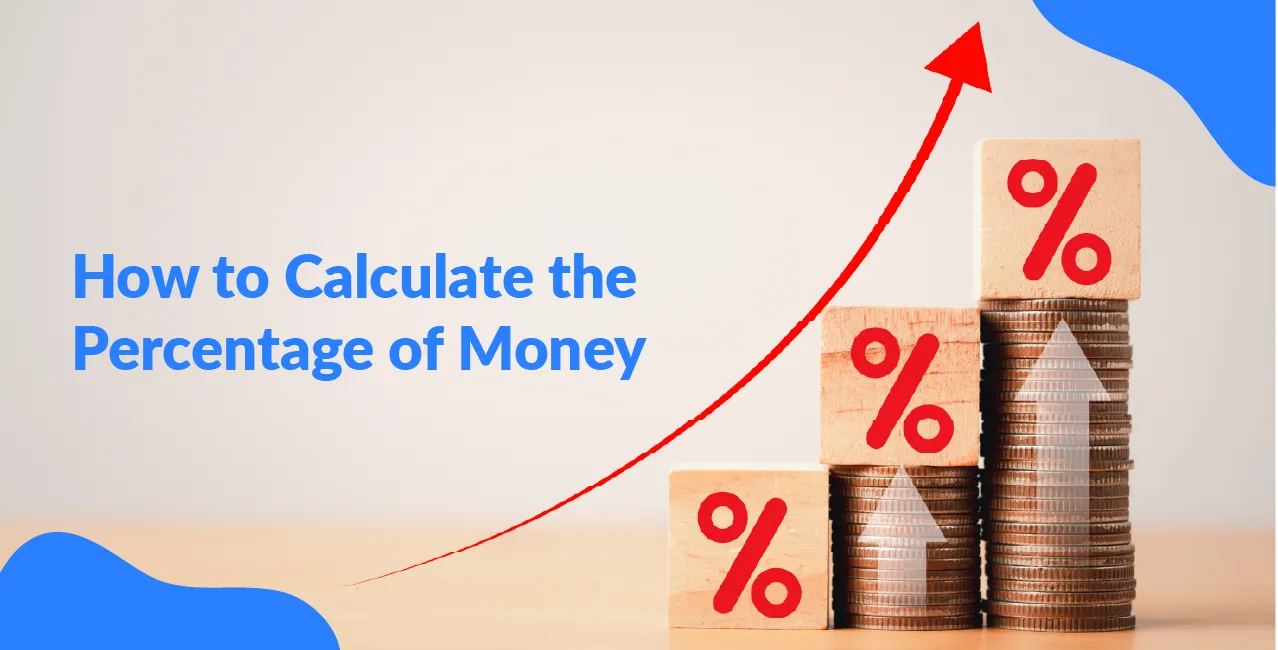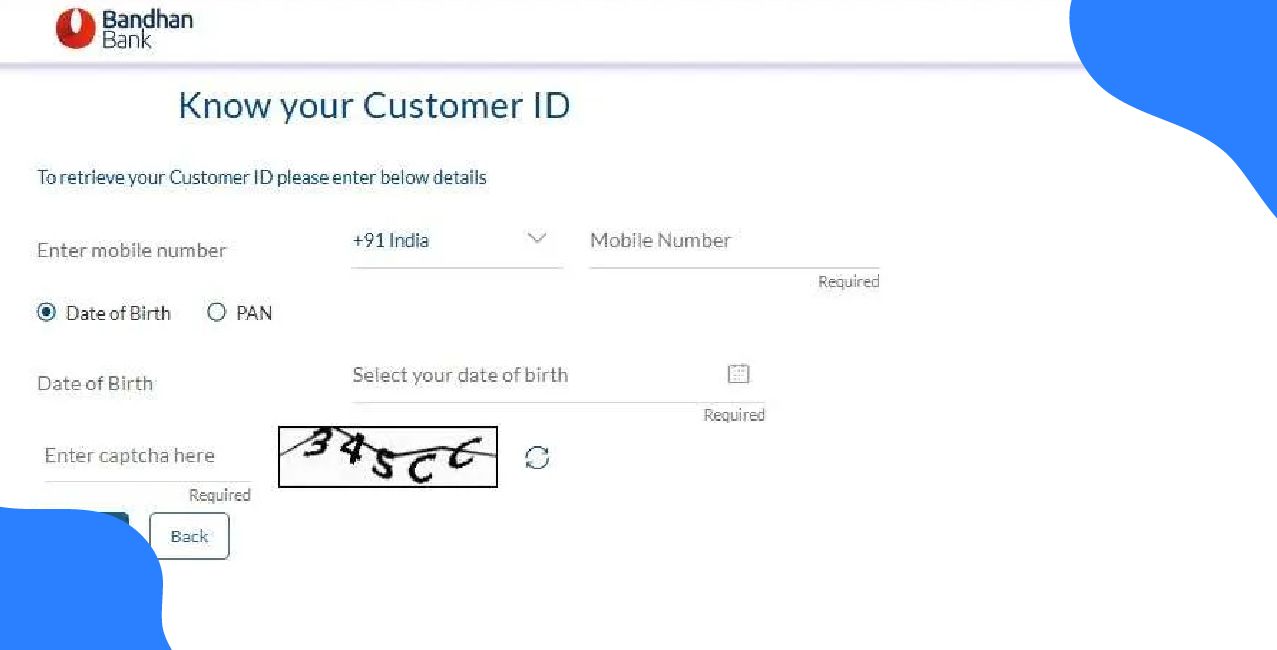
Author
LoansJagat Team
Read Time
8 Min
26 Jun 2025
How to Calculate the Percentage of Money – Simple Formula & Tips
Ritu Sharma, a 29-year-old school teacher from Pune, earns a monthly salary of ₹45,000. Like many working professionals, she often found herself wondering where all her money went by the end of the month. Determined to improve her financial habits, Ritu began tracking her expenses. She was surprised to discover that she had spent ₹13,500 on groceries alone the previous month.
Wanting to understand what chunk of her salary went into groceries, she quickly applied this formula: (Amount Spent ÷ Total Income) × 100
Which turned into: (₹13,500 ÷ ₹45,000) × 100 = 30%
This calculation showed her that nearly one-third of her income was going towards groceries. With this newfound insight, Ritu adjusted her spending habits and started budgeting smarter. Now, not only does she save more, but she also enjoys guilt-free shopping, knowing she’s in control of her money.
What is the Percentage of Money?
In simple terms, a percentage of money refers to a part of your total income or spending represented as a portion of 100. It helps break down finances in a way that’s easier to understand and compare. In everyday life, we often use percentages without even realising it—when discussing salary hikes, discounts on clothes, GST on bills, or how much of our earnings we’re saving.
Read More: Want to Cut Your Bills? Here's How to Calculate Your Electricity Bill Accurately
Why Is It Important?
Understanding the percentage of money is key to:
- Budgeting your salary
- Managing rent, EMIs, and utility bills
- Calculating savings and investments
- Tracking tax deductions or refunds
Whether you’re planning a holiday, paying off a loan, or just grocery shopping, knowing how to calculate the percentage of your money going into each category can help you make smarter financial decisions.
Where Do We Use It?
- Shopping discounts (30% off!)
- Salary distribution (how much goes into rent, travel, etc.)
- Investments and returns (mutual funds, SIPs)
- Tax calculations (income tax brackets)
Numerical Example
Let’s say Ravi earns ₹60,000 per month and pays ₹12,000 in rent.
Rent % = (₹12,000 ÷ ₹60,000) × 100 = 20%
This tells Ravi that one-fifth of his income is spent on rent. With this, he can decide if it’s manageable or too high.
Basic Formula to Calculate Percentage of Money:
The fundamental formula used to calculate the percentage of money is:
(Part ÷ Total) × 100 = Percentage
This easy-to-remember formula helps break down how much of a particular amount (the "part") contributes to the whole (the "total").
When Do We Use This?
- To find how much of your salary you are saving
- To track how much you're spending on categories like rent, bills, and travel
- To figure out the return on an investment
- To understand the loan EMI burden
The formula is handy for both individual finance tracking and business expense reports.
Let’s look at a few daily-life uses:
- If your salary is ₹40,000 and your travel expenses are ₹6,000, how much of your income do you spend on travel?
- If you invest ₹15,000 from your ₹50,000 income, what % are you investing?
It’s all about seeing your money in relative terms, which is what percentage gives you, a comparison based on 100.
Numerical Example:
Priya earns ₹30,000 per month and saves ₹9,000.
Apply the formula:
(₹9,000 ÷ ₹30,000) × 100 = 30%
So Priya saves 30% of her income, which is a healthy savings rate by most financial standards.
Percentage Calculations
Description | Total Income (₹) | Spent/Saved (₹) | Percentage (%) |
Rent | 50,000 | 15,000 | 30% |
Groceries | 45,000 | 10,000 | 22.22% |
Travel | 60,000 | 6,000 | 10% |
Investments | 55,000 | 11,000 | 20% |
By tracking these percentages, one can adjust expenses and boost savings efficiently.
How to Calculate the Percentage of Money Increase or Decrease?
Sometimes we need to measure how our income or expenses have changed over time. This is where the percentage increase or decrease comes in.
Percentage Increase Formula:
[(New Amount – Old Amount) ÷ Old Amount] × 100
Use this when your income or expenses have gone up.
Percentage Decrease Formula:
[(Old Amount – New Amount) ÷ Old Amount] × 100
Use this when your expenses or income have been reduced.
Examples Where This Applies:
- Salary hikes or reductions
- Electricity and water bills
- Grocery or petrol bills
- Investment growth or loss
Numerical Example:
Kiran used to pay ₹800 for her mobile bill. It recently increased to ₹1,000.
To find the percentage increase:
(₹1,000 – ₹800) ÷ ₹800 × 100 = (₹200 ÷ ₹800) × 100 = 25%
So, her mobile bill increased by 25%.
Percentage Increase & Decrease Scenarios
Category | Old Amount (₹) | New Amount (₹) | Change (%) |
Salary | 40,000 | 45,000 | +12.5% |
Electricity Bill | 2,000 | 1,800 | -10% |
Rent | 10,000 | 11,500 | +15% |
Internet Bill | 1,200 | 1,000 | -16.67% |
Knowing the percentage of increase or decrease helps you compare and adjust your monthly budget with ease. It also highlights where costs are getting out of hand.
How to Calculate Percentage of Discounts?
Discounts are everywhere—from online shopping sites to retail stores and supermarket chains. Knowing how to calculate a
percentage discount can save you from getting fooled by fake offers or misleading price tags.
Discount Calculation Formula:
Discount = MRP × Discount (%)
Final Price = MRP – Discount
This formula helps you know the actual price you’ll pay after the discount is applied.
When Is It Useful?
- Festival or clearance sales
- Cashback offers
- EMI-based product purchases
- Comparing products for better deals
Let’s say a ₹10,000 product has a 20% discount. You should instantly know you’re saving ₹2,000.
Numerical Example:
Anita wanted to buy a winter jacket worth ₹5,000. The store offered her a 30% discount.
Discount = ₹5,000 × 30% = ₹1,500
Final Price = ₹5,000 – ₹1,500 = ₹3,500
So Anita saved ₹1,500 and paid just ₹3,500.
Discount Calculations
Item | MRP (₹) | Discount (%) | Final Price (₹) |
Jeans | 2,000 | 25% | 1,500 |
Microwave | 10,000 | 10% | 9,000 |
Shoes | 3,000 | 20% | 2,400 |
Jacket | 5,000 | 30% | 3,500 |
How to Calculate Percentage for GST, Taxes and Service Charges?
In India, percentages play a huge role in how we pay taxes, especially GST (Goods and Services Tax) and service charges.
How GST Works?
GST is a tax added to the base price of goods and services. It’s usually set at 5%, 12%, 18%, or 28%, depending on the item. For example, restaurant food often has 5% GST, while electronics usually attract 18%.
To calculate the final price:
Formula:
Final Price = Base Price + (Base Price × GST%)
Example:
Ajay booked a hotel room priced at ₹2,000. GST applicable = 12%.
GST Amount = ₹2,000 × 12% = ₹240
Final Amount = ₹2,000 + ₹240 = ₹2,240
GST Percentage Examples
Product | Base Price (₹) | GST (%) | Final Price (₹) |
Restaurant Meal | 500 | 5% | 525 |
Mobile Phone | 15,000 | 18% | 17,700 |
Flight Ticket | 3,000 | 12% | 3,360 |
Service Charges & VAT
Service charges (like in hotels or restaurants) are often 10%. VAT (Value Added Tax) is an older system, now mostly replaced by GST.
Official Websites:
- GST Portal
- Income Tax e-Filing
How to Calculate Investment Returns Using Percentage?
Understanding investment returns is key to growing your money. Returns are usually shown in percentages, whether you invest in mutual funds, SIPs, FDs, or stocks.
Learn More: Ready to Invest? Learn How to Start an SIP Investment Today
Common Return Calculation:
Formula:
Return % = (Profit ÷ Investment) × 100
Example:
Shruti invested ₹50,000 in a mutual fund. After a year, she got ₹55,000.
Profit = ₹55,000 - ₹50,000 = ₹5,000
Return % = (₹5,000 ÷ ₹50,000) × 100 = 10%
Annual vs Monthly Returns
- FDs and Mutual Funds show annual percentage returns (APR)
- SIPs and short-term investments show monthly returns
What is CAGR?
CAGR (Compound Annual Growth Rate) helps you understand how your money grew over time, especially in mutual funds or stock market investments. It's more accurate than simple average returns.
Tools to Use:
- NSE India
- SEBI
Tip: Always consider inflation and risk before calculating “real” returns.
Percentage of Savings from Monthly Income:
Savings are the foundation of financial security. A common rule suggests saving 20% to 30% of your monthly income.
Why is Saving Important?
- Helps in emergencies
- Builds future wealth
- Helps meet short- and long-term goals (vacation, home, retirement)
Example:
Mohan earns ₹75,000/month and saves ₹15,000.
Saving % = (₹15,000 ÷ ₹75,000) × 100 = 20%
He follows the 50-30-20 rule:
- 50% for needs (bills, rent, food)
- 30% for wants (entertainment, shopping)
- 20% for savings
Tip:
Split your savings:
- Short-Term: Emergency fund, vacation
- Long-Term: Retirement, child’s education, investments
Discipline and consistency are key to building wealth through saving.
How to Use Online Tools & Calculators to Compute Percentages?
Online calculators make percentage calculations fast and error-free. Whether it’s for GST, savings, SIP returns, or tax planning, tools are available on many platforms.
Popular Tools:
- Google Calculator – Type: "20% of 5000" for quick results.
- Groww Calculator – SIP and investment return estimates.
- Zerodha Calculator – Tax, brokerage, and profit/loss tools.
- Upstox, Income Tax Portal, etc.
Example:
Manisha wants to invest ₹5,000/month for 5 years at 12% interest.
She uses Groww’s SIP calculator:
Returns = ₹4,00,000+ (approx.)
These platforms show charts, monthly breakdowns, and total maturity.
Official Links:
- Groww Calculators
- Zerodha Tools
- Income Tax Portal
Step-by-Step Use:
- Enter investment amount and period.
- Enter interest or return %.
- Click "Calculate" to get results.
These tools help plan better and reduce human errors.
Real-Life Applications of Percentage of Money:
Percentage is used every day — even when we don’t realise it.
Where do We Use It?
- EMI calculations for car/house loans
- Shopping during seasonal sales
- Profit margins in business
- Tuition fee hikes
- Education loans
Example:
Rehan runs a mobile accessory store.
- Cost Price = ₹100
- Selling Price = ₹150
Profit % = (₹50 ÷ ₹100) × 100 = 50%
Even when checking cashback offers on apps or credit card discounts, the percentage helps you assess value.
Why It Matters?
- Helps in budgeting
- Ensures smarter buying decisions
- Encourages saving and investing habits
It’s a life skill, not just a math topic.
Common Mistakes While Calculating Percentages
Even a small mistake in percentage can cause big confusion. Let’s avoid common errors.
Explore More: Take Control of Your Finances: A Guide to Financial Independence in 2025
Mistakes to Avoid:
- Using total instead of part: Always divide the smaller part by the total amount.
- Ignoring taxes or service charges: This affects the final price.
- Wrongly calculating increase/decrease: Order matters: always subtract old from new.
- Rounding off too early: Do it at the end for accuracy.
Do's and Don’ts:
Do's | Don’ts |
Use the correct base value | Use total instead of base |
Verify with a calculator | Skip checking taxes |
Round off after the calculation | Round off before calculating |
Cross-check with examples | Guess without a formula |
Conclusion
Mastering percentages empowers you to handle money wisely. From shopping to saving, investing to budgeting, percentages simplify decision-making.
By learning to:
- Calculate discounts,
- Understand GST or tax,
- Plan savings and investments,
You can avoid debt, spend wisely, and grow your wealth steadily.
It also helps you understand offers better, negotiate smartly, and stay financially independent. So next time you hear “20% off” or “18% GST,” you’ll know exactly what it means for your wallet.
FAQs
How to calculate 20% of ₹5,000?
Multiply ₹5,000 × 20% = ₹1,000.
What is the formula to calculate the percentage of savings?
(Savings ÷ Income) × 100.
How is the GST percentage calculated?
GST = Base Price × GST%.
Can I calculate investment returns using an online tool?
Yes, use tools like Groww or Zerodha.
Is rounding off before calculating a percentage a good practice?
No, always round off at the end.
Other How to Pages | ||
About the Author

LoansJagat Team
‘Simplify Finance for Everyone.’ This is the common goal of our team, as we try to explain any topic with relatable examples. From personal to business finance, managing EMIs to becoming debt-free, we do extensive research on each and every parameter, so you don’t have to. Scroll up and have a look at what 15+ years of experience in the BFSI sector looks like.

Quick Apply Loan
Subscribe Now


